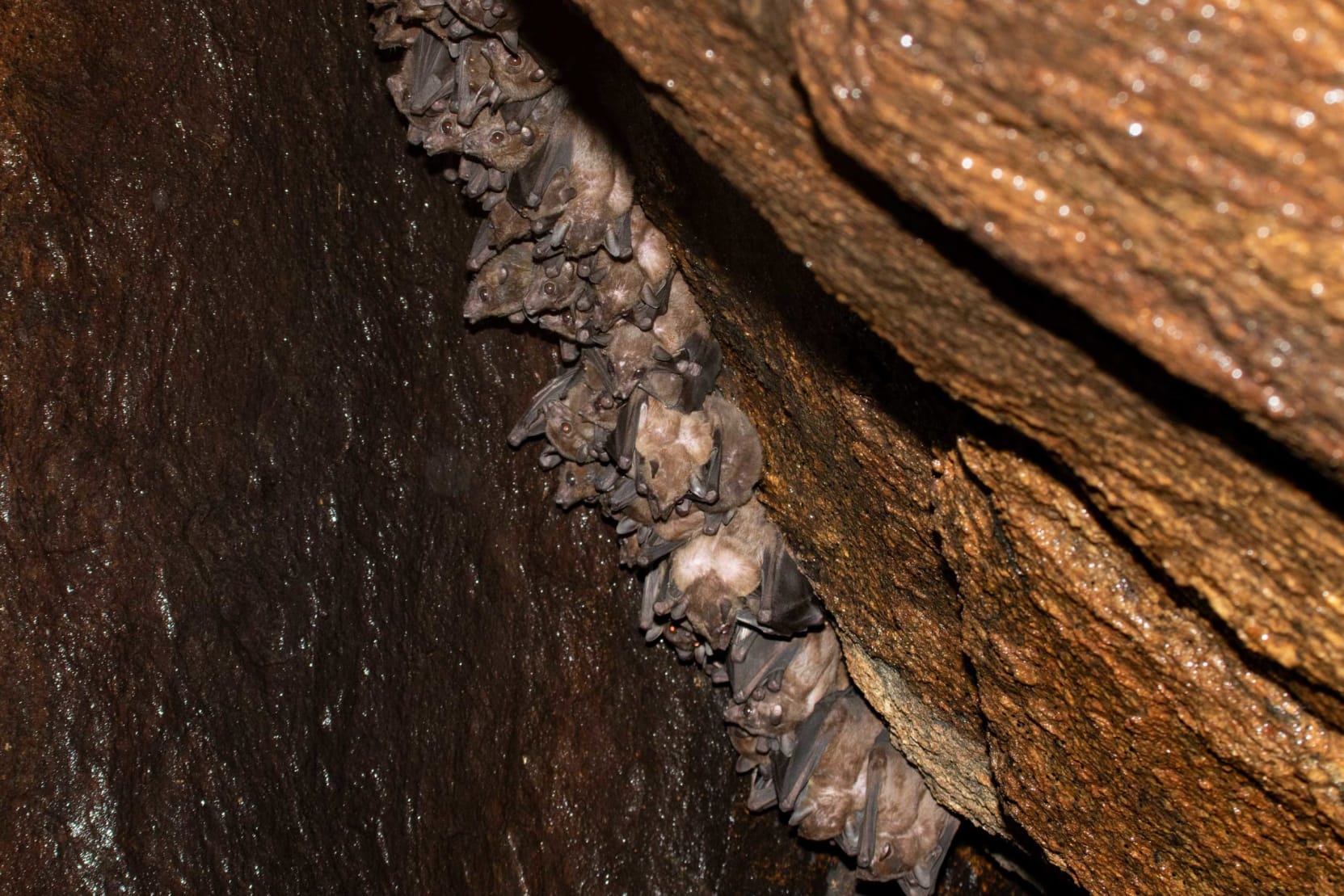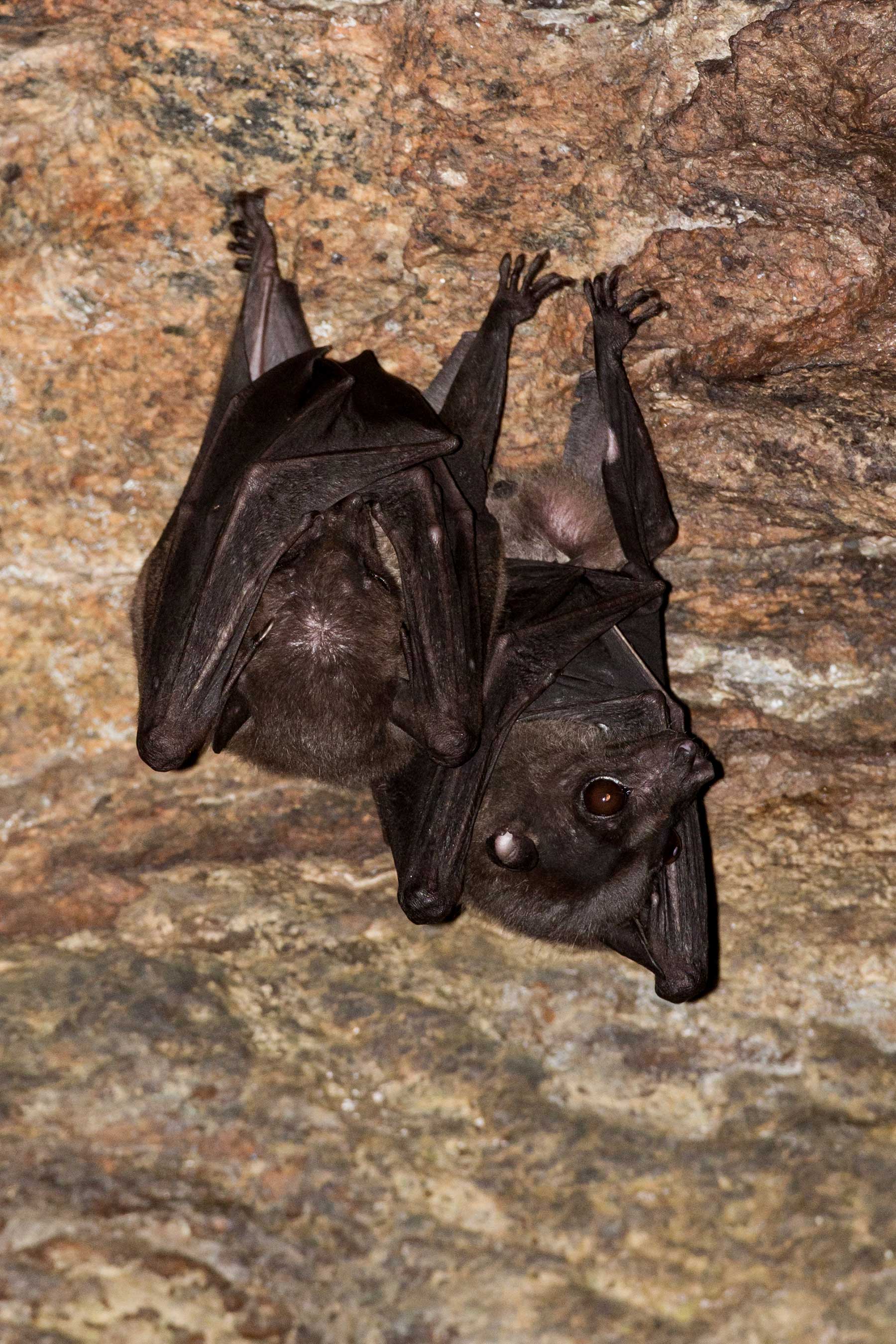 Listen to this article
•
15:34 min
Listen to this article
•
15:34 min
I used to think bats were chaos wrapped in skin. A slap of wings in the dark. They always felt like something out of an unfinished myth, like glimpses caught in the corner of your eye, half-demon, half-shadow. In my head, they weren’t part of the majestic wildlife I wanted to study. To be honest, they freaked me out. Flying leathery nightmares. That was the whole personality.
But then came this story. And this story isn’t about panic or shadows. This isn’t about the frantic beat of wings in the night or folkloric creatures dangling upside down like cursed ornaments. This is a story about stillness. About a creature so rare, so wildly specific, that its entire known universe, its past, present, and very fragile future, is scattered across just handful of caves hidden in the Western Ghats. In the presence of Salim Ali’s fruit bat (Latidens salimalii), every other bat starts to feel like background noise. Though the truth is, India holds other bats whose lives are measured out in caves: sometimes just a few, sometimes just one. This is the story of one such bat.

I was in Meghamalai in the High Wavy Mountains of Tamil Nadu, chasing hornbills and their chaos and clamour. But tucked between all that noise, a local researcher mentioned a bat, not the usual kind. The Salim Ali’s fruit bat. Medium-sized, elusive, and once feared lost to extinction. For years, the story went that it lived in a single hidden cave, a ghost species gone for good, or so people believed.
Recent surveys, however, have expanded that story. Salim Ali’s fruit bat has since been found in a handful of scattered caves across the southern Western Ghats, from Meghamalai to Anamalai, Agasthyamalai, and even Wayanad. This was a breakthrough. But it didn’t mean the bat was safe; it meant the nature of its vulnerability had shifted from a single point to a fragile network spread across a vast, fragmented landscape.
This was not the chaos of bats I’d imagined. This was something closer to reverence. A life so delicate it barely left a trace. A species so rare, its entire existence could be missed in the blink of an evolutionary eye.

The first-known specimen of this bat was collected in 1948 by Angus Hutton, but for years it slipped through scientific cracks, misidentified as a common short-nosed fruit bat. In 1972, the eminent Thai zoologist Kitti Thonglongya formally described it as a new species, working from a specimen collected in that first hidden cave. After that, the trail went cold. For more than 20 years. The bat slipped into legend, another species presumably lost. Then, like something out of a second act, it was rediscovered in the 1990s. Since then, it’s been holding on at the margins, surviving in obscurity.
It is, perhaps fittingly, named after one of India’s greatest naturalists — Dr Salim Ali, who spent his life observing birds and making the unseen visible. It’s hard not to feel the poetry in that: a ghost of a species, named after a man who made ghosts visible. A soft presence tied to a legendary seer.
Taxonomically, Latidens salimalii is an oddity; it’s the only species of its kind in the entire family of Old World fruit bats (Pteropodidae). That means it sits alone on a unique branch of the evolutionary tree. Weighing about 40-50 grams, it’s roughly the size of an adult palm, and has a remarkable “extra” set of teeth that earned it the name Latidens, or “broad-toothed”.

And yet, for all that uniqueness, it’s beautiful, not in the gothic, fang-baring way people expect of bats. It has plush grey-brown fur, large, expressive eyes, and a dog-like snout that makes it look more like a tiny fox with wings than Dracula’s army. Unlike its insect-eating cousins that rely on high-frequency echolocation to hunt, Salim Ali’s fruit bat is, well, a “fruit-eating” bat. It uses its large eyes and acute sense of smell to find ripe fruit, feeding primarily on native tree species such as figs (Ficus spp.), Elaeocarpus tuberculatus, and Dysoxylum malabaricum. It doesn’t just sip the juice, but it bites into the fruit, consuming the pulp and dropping half-eaten pieces to the forest floor below. Later, the seeds it swallows are dispersed across the landscape in its guano. In that messy, essential act, it becomes a true forest gardener, planting the next generation of trees with what it leaves behind. Even today, basic facts about Salim Ali’s fruit bats can feel just out of reach. There are still no long-term studies that track individuals year after year, and much about their breeding cycles and social life remains uncertain. But thanks to fieldwork in the last couple of decades, some things are clearer than before.
We do have rough population estimates. Recent surveys put the total number of Salim Ali’s fruit bats at around 800-850 individuals. Most known colonies are in the mid and high elevations of the southern Western Ghats. Surveys have found at least two permanent roosts, several seasonal caves, and dozens of smaller resting and feeding sites across these regions.
So, while the old story of a single-cave species no longer holds, they aren’t quite “safe”. Each of these newly discovered cave shelters is just a small slice of their population. Their overall numbers are still low, and the bat remains rare and endangered on the IUCN RedList.

Most fruit bats are generalists, feeding on a wide variety of fruits, especially figs, which are available almost year-round. Salim Ali’s fruit bat, on the other hand, is a specialist. From what we know, its diet revolves mainly around native trees, all of which are found only in moist evergreen forests at specific elevations. This selective menu means the bat’s survival is closely tied to the presence of a few key fruiting trees. When those trees decline or disappear, so do the bat’s chances of survival.
Changes in the land around roosting caves add to the pressure. Even though coffee and cardamom plantations in the Western Ghats are often grown under shade or within mixed agroforestry systems, these landscapes still fail to fully replace the diversity of the original forests. Over time, essential native fruit trees have become increasingly sparse, shrinking the bat’s foraging options.
The situation is made worse by deforestation for firewood, which fragments the forest even further and forces bats to hunt across smaller, more isolated pockets of habitat. Human disturbances, like artificial lighting, compound the challenge, making nightly foraging more difficult.

Granite quarrying near some roost sites is an emerging concern. While no direct studies have measured quarrying’s effects on Salim Ali’s fruit bat, evidence from cave-roosting bats elsewhere shows that noise, dust, and vibrations can seriously disrupt sensitive species. For a bat already living on the brink, even small new pressures like these matter.
And that, to me, is the real weight of this story. The sheer unseen-ness of it all. I never got to see the bat. I didn’t crawl into its cave or capture it with my lens. But knowing it was nearby, just a few kilometres from where I stood, changed the way I moved through the landscape. The forest felt different. The silence felt loaded. Every tree I passed became a question: Is this one of the few that matters to it? Is this fruit the one it needs?
Because sometimes it’s not the creatures we see that leave the biggest mark. Sometimes it’s the ones we never meet, the ones that haunt the edge of our awareness, just out of sight. They remind us of how much we don’t know. How much beauty and biodiversity exists quietly, without drama or spectacle. They remind us that conservation isn’t only about the big, charismatic species that get funding and documentaries. It’s also about the quiet ones.






